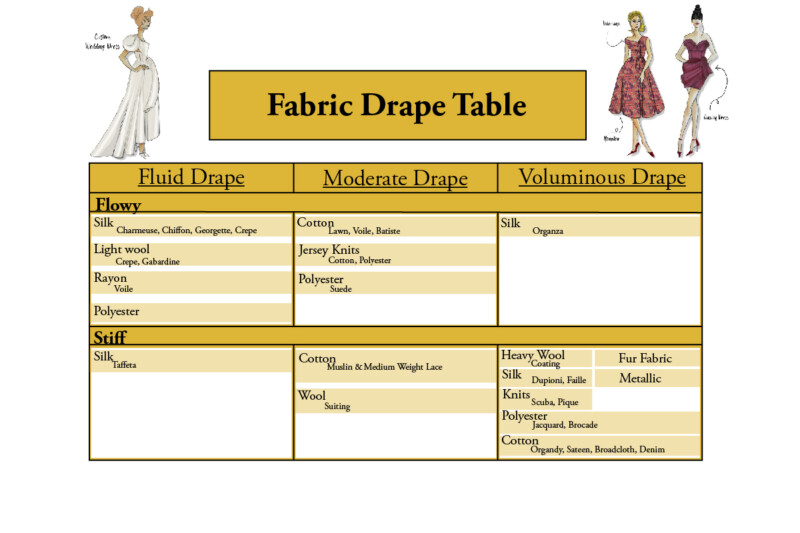I once tried to make a matching PJ set for apparel class in high school and I specifically remember what an overwhelming experience gathering the fabric for the project was. I went into my local fabric store bravely looking for the perfect fabric for my cool PJ’s, where the aisles seemed to go on forever (when they didn’t). I listened to my teacher who warned the class to buy non-stretch and thin (beginner-friendly) fabric so that it would be easiest to sew with. I didn’t know much about fabric and fibers, so I made my decision based on touch and how it looked when I rolled out some fabric and let it drop around my hand. I didn’t really know I was learning about drape at the time, but I quickly learned how much it affected my final products. I’m going to discuss the drape and fit of the most common fabrics so that you can make informed fabric selections and eliminate a lot of the guesswork.
Let’s lay down our foundation by establishing some important terms and ideas.
Fiber vs. Yarn vs. Fabric
Fiber: a raw filament that is natural or synthetic
Yarn: long interlocked fibers that create a thread
Fabric: the final product produced by interlocking fibers or yarns
Drape vs. Weight
Let’s first clarify that fabric weight and drape are not dependent on one another but are closely related.
Fabric Weight: how heavy or light a piece of fabric feels when held.
Fabric Drape: the way that fabric falls against the body. There are several different types of drape.
- Fluid Drape: a very flowy fabric that hugs and conforms to the body. It holds pleats and gathers well
- Moderate Drape: the most versatile type of drape that skims the body rather than hugging every curve. It still holds gathers rather well.
- Voluminous Drape: fabric with this type of drape is often stiffer which causes it to stick out from the body. Soft fold and pleats will form.
Testing Drape
Simply place a piece of fabric on top of your arm or another surface to see how it looks when it falls.

Common Fabrics & Their Drape

Fluid Drape
Natural fibers like:
Silk (Charmeuse, Chiffon, Georgette, and Crepe)
Lightweight Wool (Crepe, Gabardine )
—————————————————————————-
Rayon (Voile)
Check out The Todea Dress free sewing pattern from Mood’s Lavender Collection for fluid drape inspiration.
Moderate Drape
Cotton (Lawn, Voile, Batiste, Muslin, Medium Weight Lace)
Jersey Knits (Cotton, Polyester)
Wool (Suiting)
Polyester (Faux Suede)
Check out The Heather Dress free sewing pattern for moderate drape inspiration.
Voluminous Drape
Cotton (Organdy, Sateen, Broadcloth, Denim)
Heavy Wool (Coating)
Silk (Faille, Dupioni)
Knits (Scuba, Pique)
Check out The Pine Dress or The Ainsley Dress free sewing patterns for voluminous drape inspiration.
Fabric drape doesn’t need to be a daunting part of your project. Just like sewing, it takes time to figure out, but it certainly isn’t difficult or impossible by any means. I know from firsthand experience that touching fabric is the best way to know how it will drape, but with the increase of online sales, especially right now, that isn’t always feasible, so this post will help cut down the guesswork and provide a great base for making informed fabric selections.
I hope this post gets you in the MOOD to sew.
Which of Mood’s Free Patterns are you going to create next?

4 comments
This post is very informative and quite useful to beginner sewists.
Thank you so much for this! Very helpful to me.
Thank you for sharing your knowledge with us, Stephanie.
Thank you so much! This was *really* helpful, and very on-the-point!